When Juan Osorio emailed us a couple of months ago about his latest project, it took a minute to reply because we were too busy collecting our jaws off the floor…
A ‘nude’ body painting shoot the likes of which you have NEVER seen before, Juan captured a New Guinea Snake Charmer and his extremely rare python in action, all in the man’s own back yard.
Scroll down to find out both the story and the setup behind this incredible portrait shoot, including a breakdown of the many challenges he faced, gear he used, BTS details, and a look at the exact lighting setup!

Background and Inspiration
The snake portrayed in the pictures is a very unique species of python called the Boelen’s python—its scientific name is Simalia Boeleni.
The photo shoot was commissioned by Evan Wexler, one of the world’s successful snake enthusiasts and the owner of one the largest collections of these marvelous species snake in captivity.
The inspiration for this photo shoot was Evan’s love of these pythons, and his friend Ari R. Flagle, a researcher who “travels to study these snakes in the wild.”
Flage’s first book titled “Black Python” was published in 2009. He is presently writing his updated manuscript detailing Simalia Boeleni and New Guinea. For interested readers, his first book can be found on Amazon.

New Guinea, the second largest island in the world, houses roughly 4,642 vertebrate species. The island of New Guinea has numerous species of reptiles; this unique species of python is only found on the Island of New Guinea, at an elevation of 6500-8500ft above sea level.
Boelen’s pythons are cloud forest residents and have been sited from the Vogelkop Peninsula (Birds head region) all the way to the east of Papua New Guinea (PNG). These snakes are presumed to follow the mountainous spine of the Maoke Mountains, which is composed of the Sudirman and the Jayawijaya range. The original holotype specimen was found in an area named Dimija, on December 25, 1952.
Interestingly, this species of snake receives as high protection as that of the bird of paradise in PNG. Throughout New Guinea, this snake is highly revered by the indigenous tribes and is referred to by many names such as “Blu Moran” or “Papa Graun Moran” in PNG.
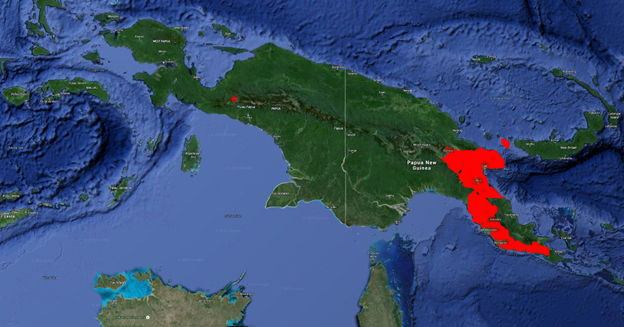
Boelen’s Python distribution
The snake is a uniform jet black color with forward facing yellow bands that start from the face of the animal and work its way towards the mid body. Set in the right lighting, these snakes display a velvety sheen and a breathtaking iridescence.
To the average person these pythons seem rather large; however, on average, this species rarely exceeds 8 feet in length. As neonates, these snakes are typically a rusty red color, and they change to adult colors as they mature.
In my personal opinion, I can honestly say that I have never been in the presence of a more beautiful snake than this in my life, and I have seen hundreds of snakes before.

Challenges
Since this snake is unique to this island and so protected and respected by the aborigines, Evan wanted me to take pictures of him in authentic wardrobe from the region.
I thought that having the clothes picked out already made the creative process easier and would expedite the preparations. That couldn’t have been further from the truth.
The traditional feathers, hat, and necklace were beautiful pieces brought directly from New Guinea, but I was not aware that the full outfit was completed by the Koteka. That is the name given by the natives to the penis gourd they wear and which has been always part of their culture.
The reality of having to photograph an almost naked man with a snake was very stressful. The goal was to direct attention to the rare and beautiful animal and their docile demeanor, but also incorporate the human element and keep the lack of clothes from becoming a distraction.

I immediately started doing research on the snake and the people from New Guinea and found that there is an annual festival at Mount Hagen, the third largest city in PNG, in which several tribes wear different kinds of makeup and outfits. I was especially attracted by the skeleton dance, and I thought that would be the perfect decoration for the model.
The photo shoot has to be done at Evan’s home, because this is a very delicate and rare animal valued at more than $10,000 USD and is kept in an air-flow, humidity, and temperature controlled environment. Traveling to a studio and keeping the reptile out of its environment for several hours would have been deleterious for its health.
This meant that we had to build a studio in the backyard. To keep external light contamination to a minimum, the actual shoot had to start at night and we had to work fast because the cooler air of late afternoon and evening differed greatly from the normal conditions of the sophisticated system the animal is usually kept on.
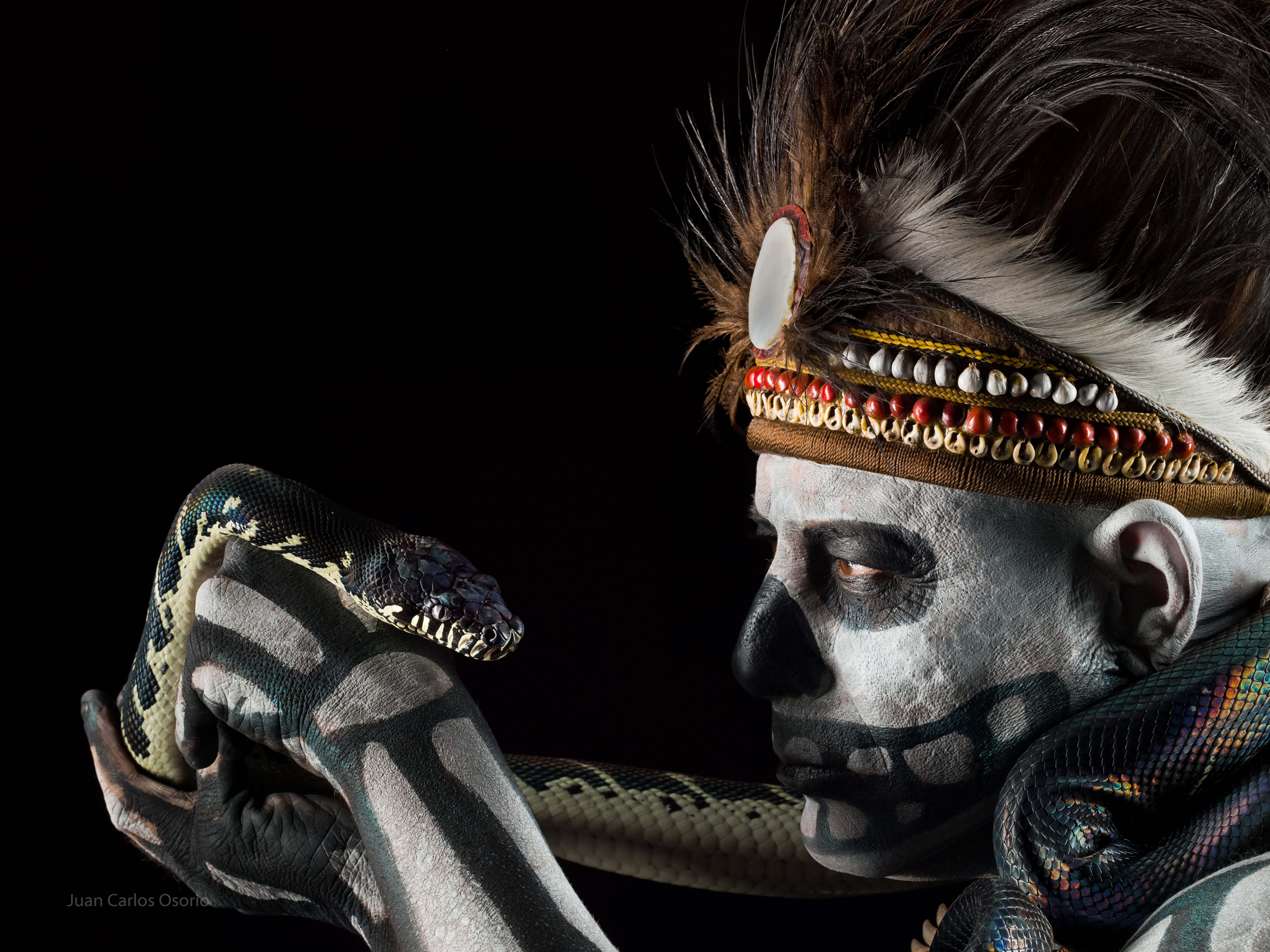
Working with animals is always complicated. One has to be careful about not hurting the animal or getting hurt; it also poses challenges to everything you take for granted at the time you press the shutter.
Focusing, posing, and composing are usually dynamic because with few exceptions, animals move most of the time. In this particular case, everything had another level of complexity because the snake was moving around Evan.
Both snake charmer and snake had to be in focus and well-illuminated, and the model was simultaneously trying to listen to my directions and pay attention to the position of the snake at all times.

Given the constant changing conditions and the requirements to work fast, the lightning equipment had to be capable to keep up and be reliable.
Strobes are known for over-heating if you take images in rapid succession; furthermore, most strobes cannot deliver a fast rate of flashes because their recycle time is limited. It is also known that only the best systems can perform under these stringent conditions without changing color temperature. Consistency in color from image to image was paramount to us.
After researching all the options, I concluded that the best equipment I could use was Broncolor. They are famous for being capable of delivering very short flash durations, quick recycling, and the best color consistency under extreme conditions.

We used the 2 largest strip softboxes from Broncolor 180 X 30 (1 x 5.9′) with grids on either side of the model because it gave us the freedom to squat, stand up, and sit on the floor, but control the spill and quality of the light. We wanted to create drama.
Since the snake would move all over Evan’s body, we also decided to use a front fill very softly. We used a large parabolic umbrella from Broncolor, the Para 133, which covers a large area and creates wonderful light even if the subject moves from the initial position.
I would say it is much more forgiving in these kinds of dynamic situations than an octabox or a large softbox. We were also very pleased with the vertical highlights, giving more emphasis to the reptilian nature of the subject.

One of the most interesting things about this snake is its iridescence, and we wanted to show it in its grandeur. The problem is that is not a constant—it only appears when light is striking the body of the animal is certain angles, and if the animal moves it is gone.
In order to capture as much as possible of the fantastic color we needed a high megapixel camera with the highest dynamic range and color depth possible, so we decided to use a medium format Hasselblad camera with an IQ 250 Phase One digital back.

Creative Phase
I have always been an admirer of makeup artists and body painters, and this was the opportunity I was looking for to incorporate this kind of art into my images. Going through body painter websites, I found incredibly beautiful work from many artists, but my favorite of all was the work of Tash Kouri.
Tash Kouri is an American body painter and performance artist living in New York City. She represented the United States at the 2012 World Bodypainting Festival in Poertschach, Austria.
I called her and she was very excited by this unusual project. We had several conversations about how to incorporate the skeleton dance makeup into the photo shoot, and came up with the idea of mirroring the snake’s skin on Evan.
The makeup process was very meticulous. After 5 hours and several layers of air brush paint, we were ready to start taking pictures.
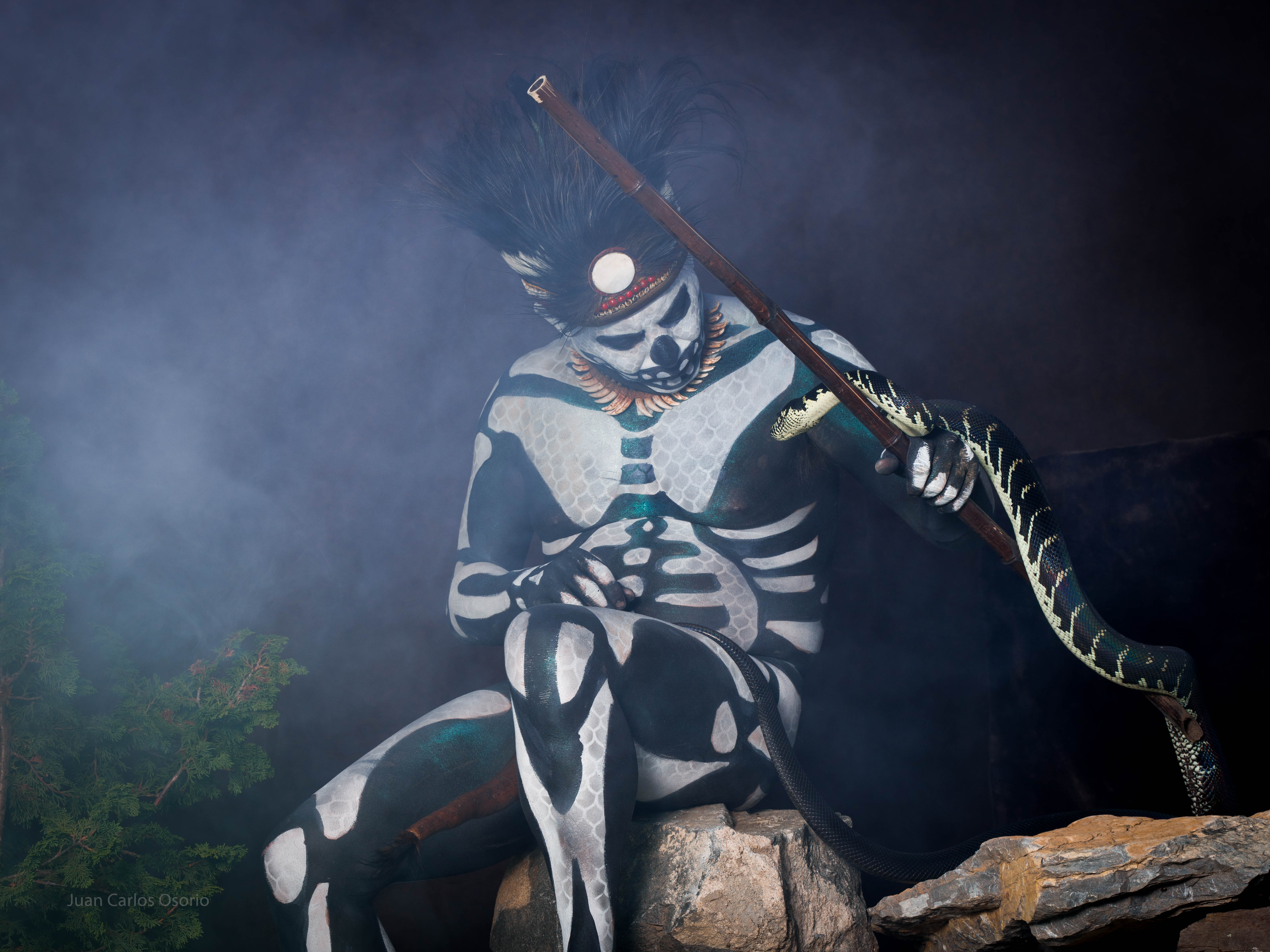
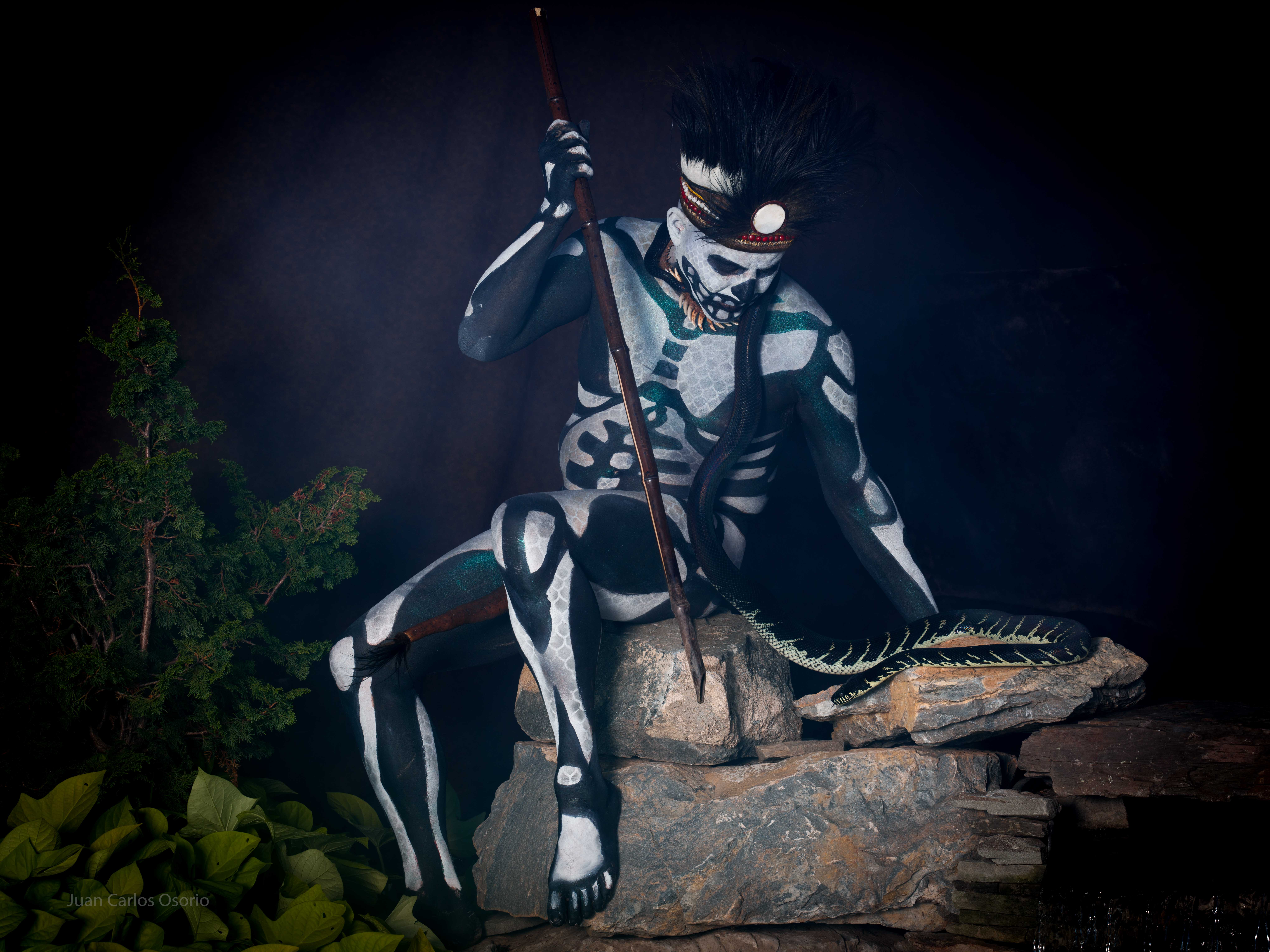
Camera, Lenses, and Lighting Equipment
We used a Hasselblad H4X medium format camera with a Phase IQ250 medium format digital back with CMOS sensor attached. For lenses, we alternated between the Hasselblad Wide Angle 35mm f/3.5 HC, Hasselblad HC Macro f/4 120mm II Lens, and Hasselblad Normal 80mm f/2.8 HC.
Lighting was already mentioned above but we’ll recap here: We used one Broncolor Para 133, a Broncolor Move L 1200, two Mobi LED lights, and two Broncolor Siros 800S’s.
For those who are interested, here’s the lighting diagram that shows the final setup:
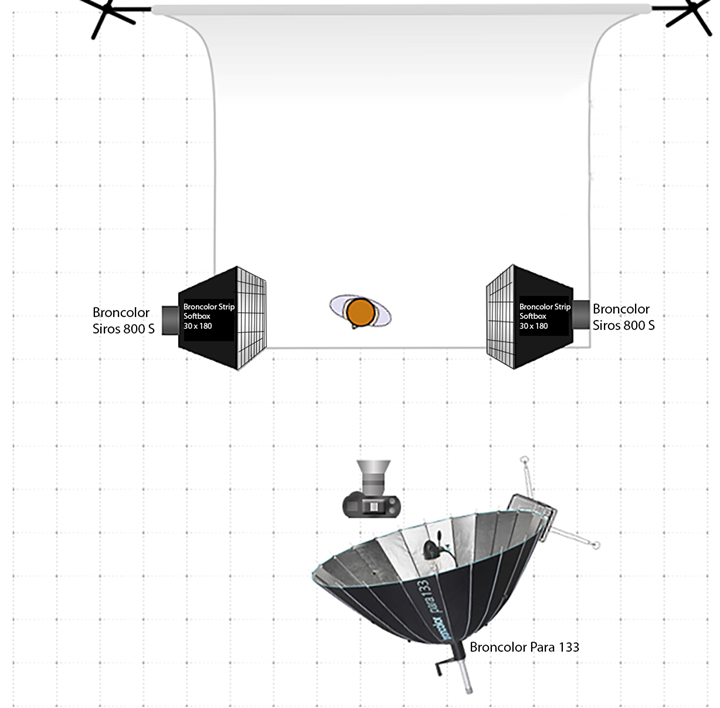
Behind The Scenes
These images were taken with a different snake. This is the Ocelot Leopard python. We took several images of this beautiful snake before we started with the Boelen’s python because its bright yellow color made a wonderful contrast against the black background and therefore we could setup the lights faster than it would have been possible with the almost totally black Boelen’s.

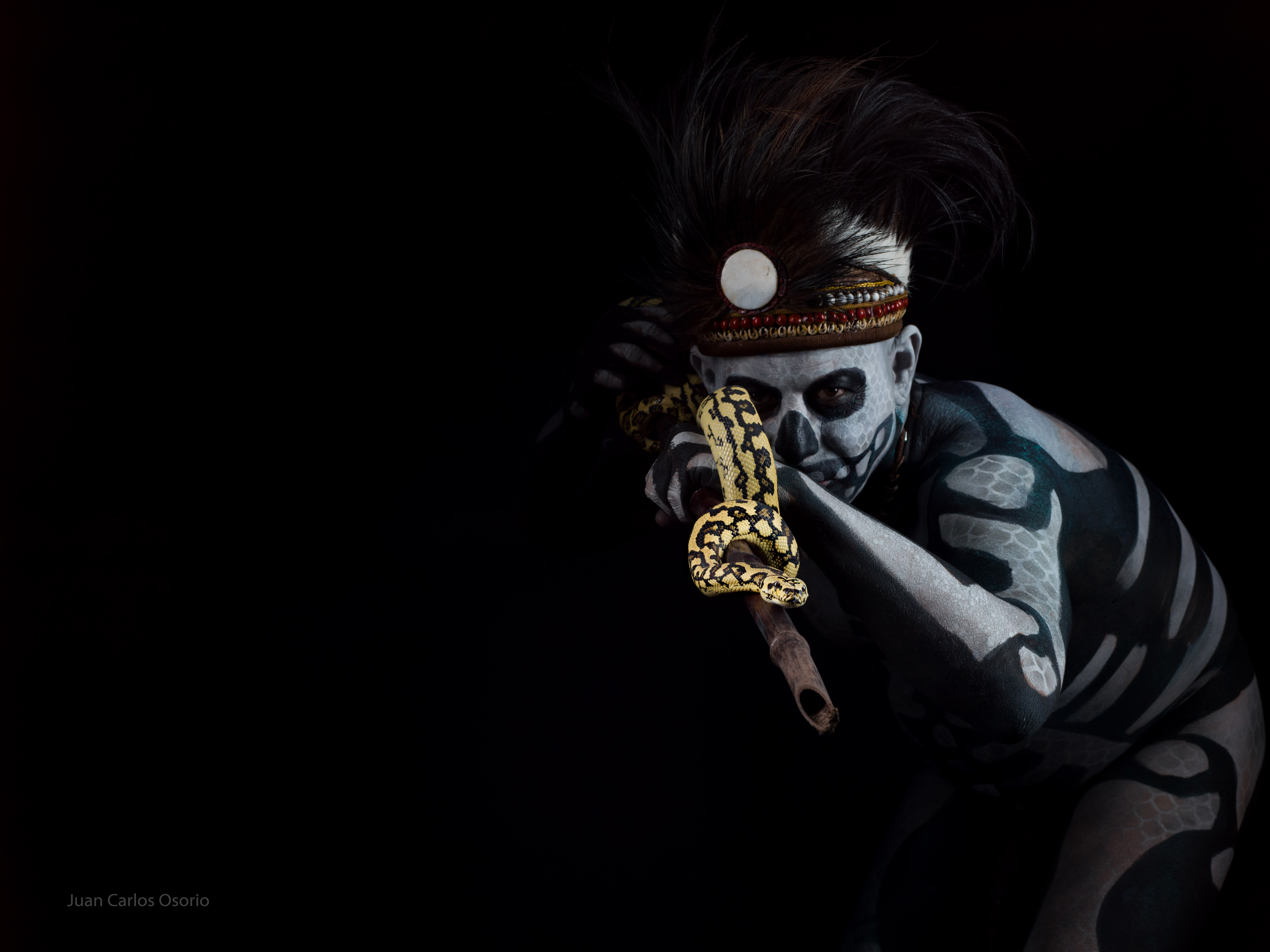
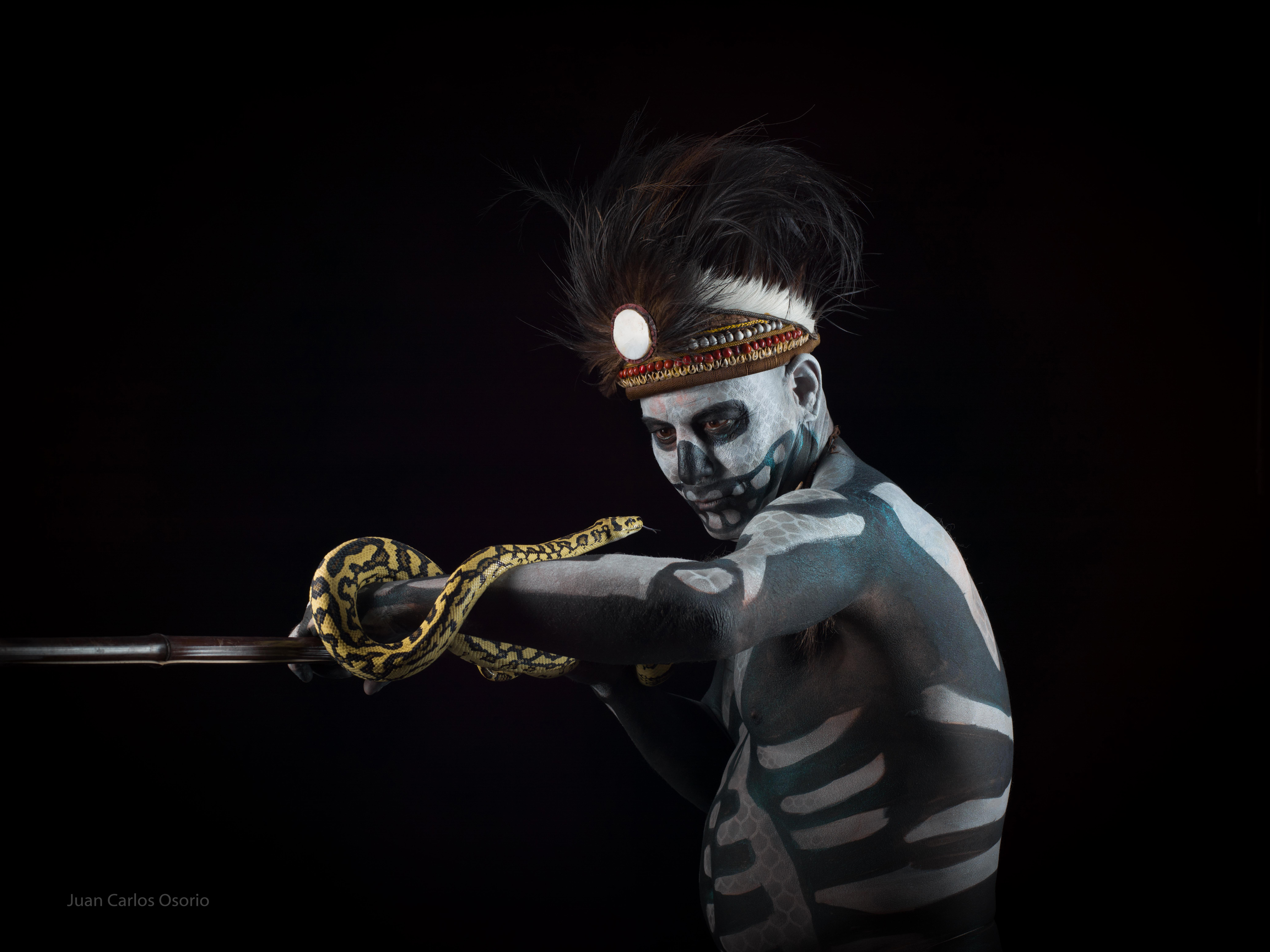
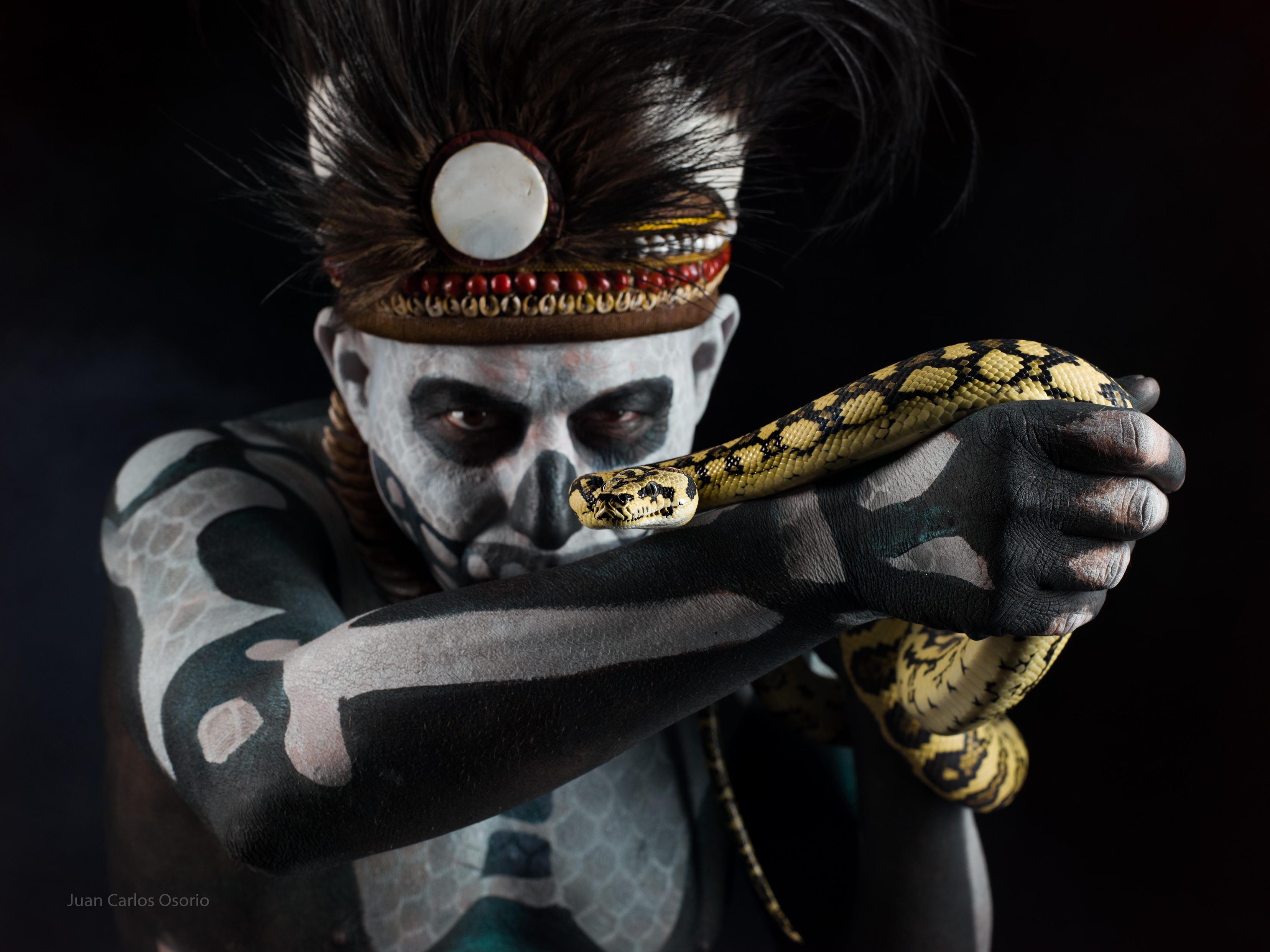
Once we had everything ready to go and the lighting dialed in, we switched over to the Boelen’s python and captured the rest of the images, including all of the shots scattered throughout this post.
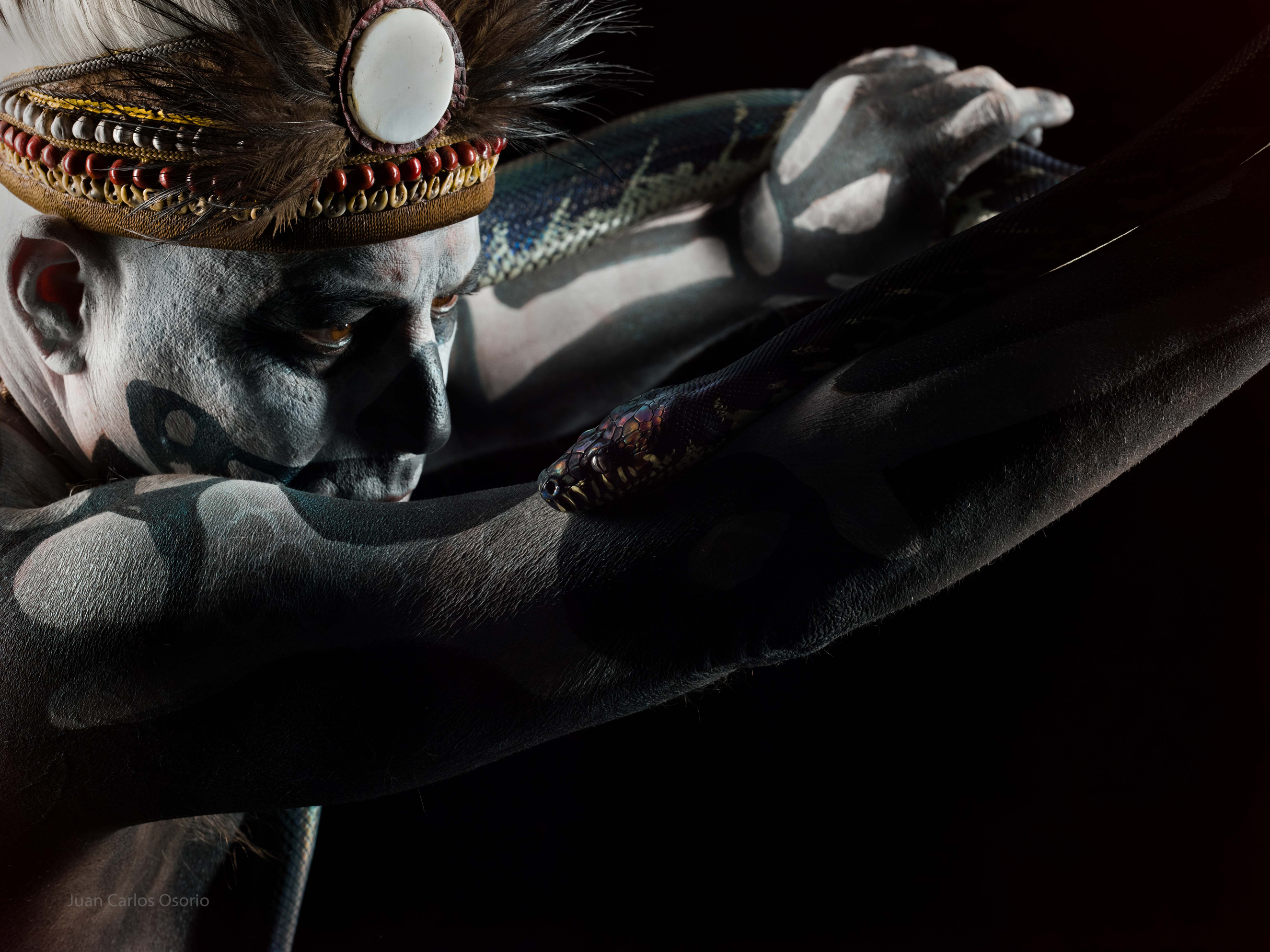

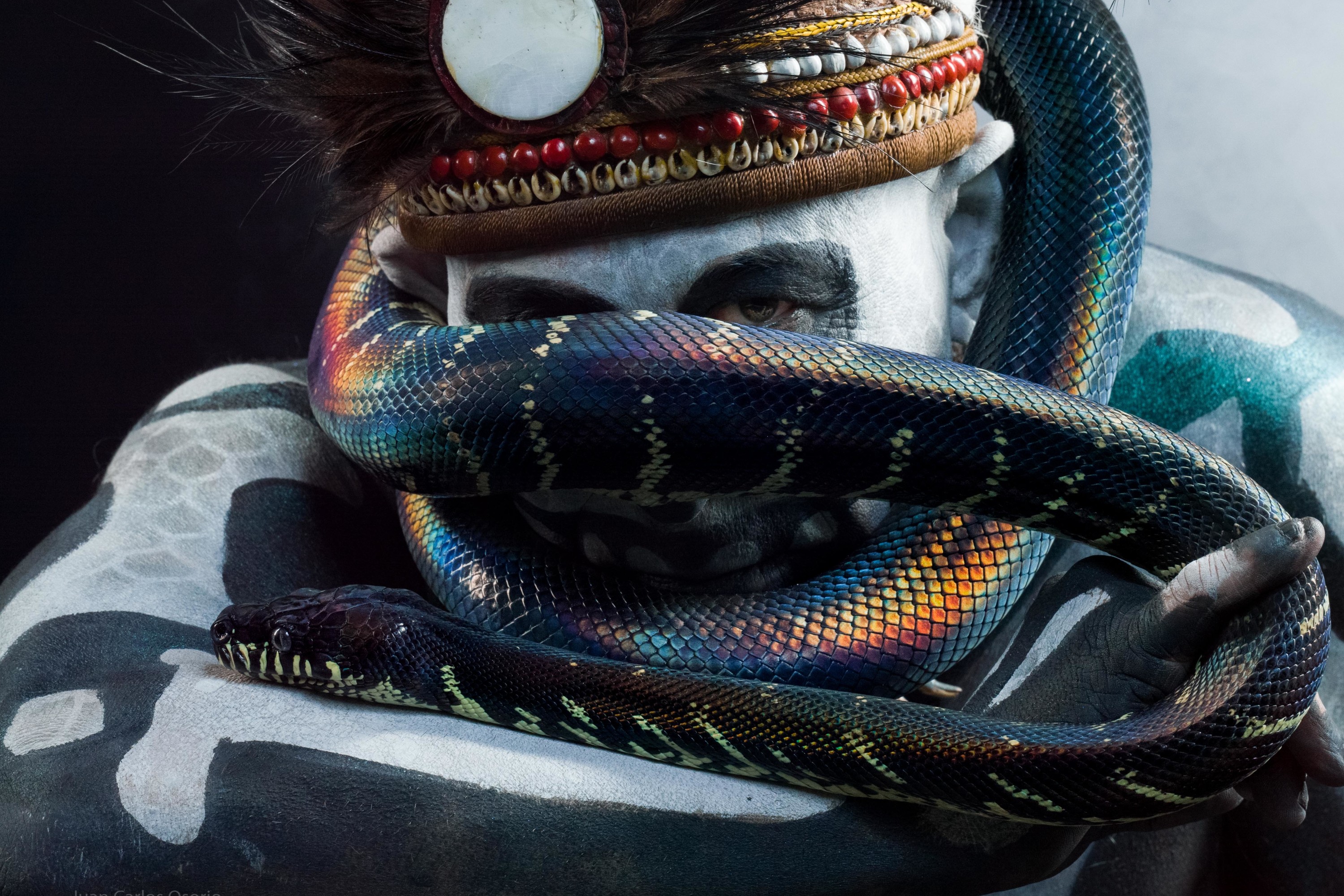
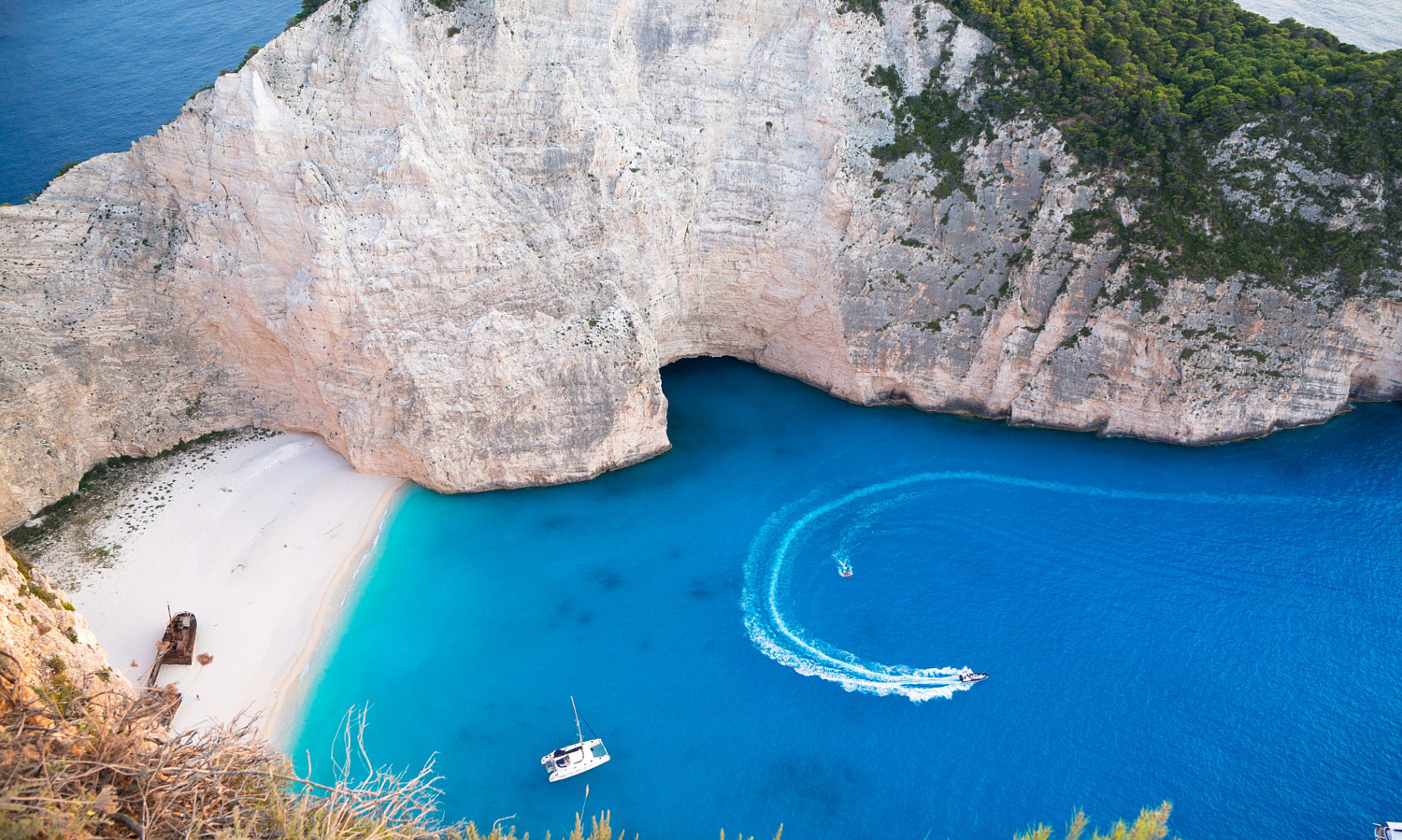




Leave a reply